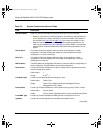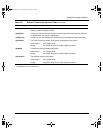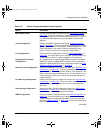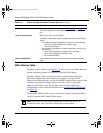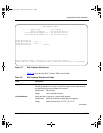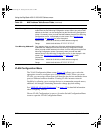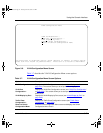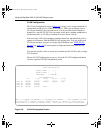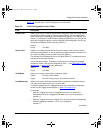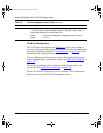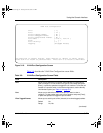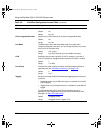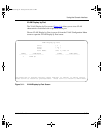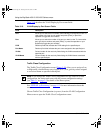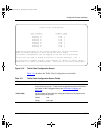
Using the BayStack 450 10/100/1000 Series Switch
3-24
302401-D Rev 00
VLAN Configuration
The VLAN Configuration screen (Figure 3-9
) allows you to assign standalone or
stacked unit switch ports as VLAN port members. When you configure ports as
VLAN port members, they become part of a set of ports that form a broadcast
domain for a specific VLAN. You can assign switch ports, whether standalone or
stacked unit ports, as VLAN port members of one or more VLANs.
You can assign VLAN port members attributes that allow the individual ports to
operate in accordance with the IEEE 802.1Q tagging rules. You can assign each
VLAN port member as tagged or untagged port members (see “
IEEE 802.1Q
Tagging” on page 1-33 for a description of important terms used with 802.1Q
VLANs).
You can also use this screen to create and to delete specific VLANs, and to assign
VLAN names.
Choose VLAN Configuration (or press v) from the VLAN Configuration Menu
screen to open the VLAN Configuration screen.
Figure 3-9. VLAN Configuration Screen
VLAN Configuration
Create VLAN: [ 1 ]
Delete VLAN: [ ]
VLAN Name: [ VLAN #1 ]
Port Membership
1-6 7-12 13-18 19-24 25-28
------ ------ ------ ------ ------
Unit #1 UUUUUU UUUUUU UUUUUU UUUUUU UUUU
Unit #2 UUUUUU UUUUUU
Unit #3 UUUUUU UUUUUU
Unit #4 UUUUUU UUUUUU UUUU
KEY: T = Tagged Port Member, U = Untagged Port Member, - = Not a Member of VLAN
Use space bar to display choices, press <Return> or <Enter> to select choice.
Press Ctrl-R to return to previous menu. Press Ctrl-C to return to Main Menu.
kombk.book Page 24 Tuesday, June 29, 1999 3:25 PM



